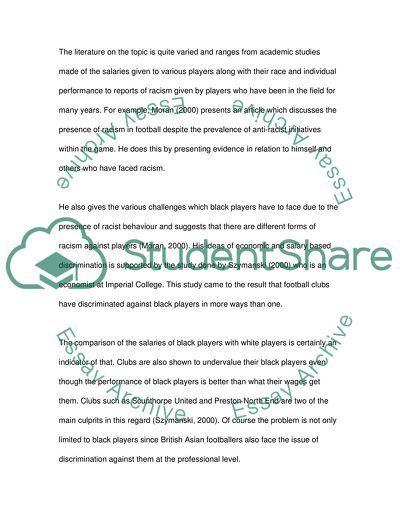Cite this document
(Racism in Football Research Proposal Example | Topics and Well Written Essays - 1750 words, n.d.)
Racism in Football Research Proposal Example | Topics and Well Written Essays - 1750 words. Retrieved from https://studentshare.org/sports-and-recreation/1538997-racism-in-football-soccer
Racism in Football Research Proposal Example | Topics and Well Written Essays - 1750 words. Retrieved from https://studentshare.org/sports-and-recreation/1538997-racism-in-football-soccer
(Racism in Football Research Proposal Example | Topics and Well Written Essays - 1750 Words)
Racism in Football Research Proposal Example | Topics and Well Written Essays - 1750 Words. https://studentshare.org/sports-and-recreation/1538997-racism-in-football-soccer.
Racism in Football Research Proposal Example | Topics and Well Written Essays - 1750 Words. https://studentshare.org/sports-and-recreation/1538997-racism-in-football-soccer.
“Racism in Football Research Proposal Example | Topics and Well Written Essays - 1750 Words”. https://studentshare.org/sports-and-recreation/1538997-racism-in-football-soccer.


